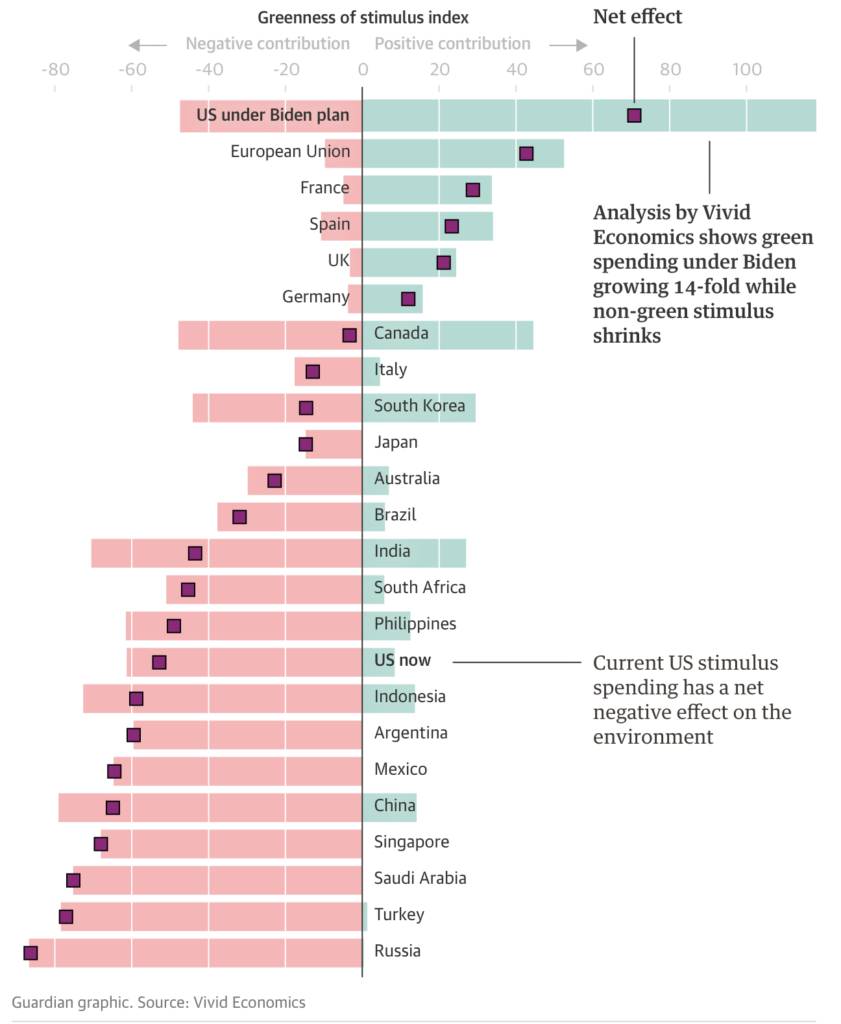Globally, the world’s governments have announced over 13 trillion (US) dollars to be spent on recovering from the Covid pandemic.
Here in New Zealand, it’s tough to be precise about the recovery commitment because buckets of economic development money were flowing out of key budgets like the Primary Growth Fund well before we heard of Covid-19. That aside, the Government has announced fiscal measures amounting to a total of NZ$58.5 billion (19.5% of GDP) through FY2023-24. The includes the COVID-19 Response and Recovery Fund, of which NZ$14.1 billion has been set aside for a possible second wave contingency.
The International Monetary Fund maintains an excellent up-to-date country-by-country listing of recovery responses here.
Progressive politicians, economists and environmentalists have argued that there’s a hugh win/win opportunity if a substantial amount of ‘recovery’ funds can be spent in ways that help future proof our planet against further environmental degradation … and especially, to mitigate the effects of climate change.
What is pointed to most often is green energy-related investments — from alternative fuels to cleaner and more energy-efficient industrial processes, building construction and transportation choices.
According to the World Resources Institute (WRI), after the 2007-09 financial crisis, governments announced about $520 billion for green measures like railways, energy efficiency, grid modernization, renewable energy, and water and waste management.
Unfortunately, between coping with Covid resurgence, (hopefully now) vaccine distribution, and immediate income support programmes, governments have not been optimising the opportunity to recover green.
Here is an assessment put together by The Guardian in clear chart form.
The issue is discussed in intelligent detail, as usual, in this recent Guardian article.
And here’s WRI’s assessment: About 30% of the total stimulus is going to economic sectors that will have a large impact on the environment — and unfortunately, in the majority of countries, that spending is expected to have a negative impact.
Both of these analyses are largely based upon VividEconomics’ Greenness of Stimulus Index.
Typically, NZ is off at the kiddies’ table when these ‘major economy’ analyses are put together.
New Zealand’s list of ‘green recovery’ initiatives would be a short one. Pre-election, the Greens proposed a $1 billion ‘nature-based’ recovery package. The big pledge from Government so far — 11,000 ‘environment jobs’ for things like tree planting, restoring wetlands, stabilising stream banks. Important work, absolutely, but arguably politically-easy cotton candy.
We have yet to see the much-needed infrastructure investments that would represent a real commensurate response to the Government’s declared ‘climate emergency’. As it stands, from Boris to Greta (the media’s previous princess), NZ’s climate stance is increasingly drawing barbs.
Maybe one of HB’s Labour MPs can prevail upon Treasury to produce NZ’s ‘green recovery’ list. Then we could debate its sufficiency. The Stimulus Index cited above provides a good model.



Would be interesting to see where Aotearoa/NZ stands in comparison with some of the Scandinavian and European countries with similar populations. I suspect we are miles off the pace! Not much rhetoric and even less action and commitment to date.